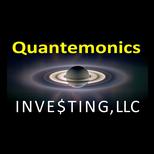 Author: Paul Franke, Quantemonics
Author: Paul Franke, Quantemonics
Covestor model: Relative Value
Disclosure: Long JNJ
I have received many emails during the past few months asking how we pick stocks in our Covestor Relative Value portfolio. Our philosophy, developed over decades of trading, is a combination of many factors that yield what we believe to be an optimal “margin of safety.”
A combination of value and growth thinking are at the center of the process. A simple explanation: we are searching for the most unloved, undiscovered or misunderstood values in the market. When we find stocks worth considerably more than the current stock pricing either through (1) a liquidation or breakup of the business, or (2) a level-headed forecast of growth in the underlying business operation, we add it to our master list of potential investments.
There are many data points on our computer screens. The data revolves around the idea of comparative analysis of each stock’s historical price valuation. We compare the valuation outline created to others in the industry and overall stock market that could be used as alternatives or substitute investments for our money. The Quantemonics investment team then weights the portfolio and actual positions based on our forecast of future stock market and economic trends for the next 12-24 months.
Let’s go through an example. One of our top individual company names we have owned since inception in February is Johnson & Johnson (NYSE:JNJ), the maker of medical products (39% of sales in 2011), pharmaceuticals (38%) and medical products such as Band-Aids and Tylenol (23%). With investors worried about the future of health care spending and potential drug price fixing in the coming years by the federal government, the entire health care industry is trading at lower than 20-year normal valuations vs. the general stock market (we use the S&P 500 Index) of late. Plus, JNJ has had problems with product recalls for several years, and earnings have been relatively stagnant.
After reviewing the industry and company specific problems, we believe Johnson & Johnson’s future is actually much brighter than its market valuation at this stage. With a strong above-average dividend yield around 3.5% (as of 10/28/11), based on 45% of free cash flow payout annually, and a price to free cash flow yield of nearly 8.5% at a low-$60 stock quote, JNJ’s super-conservative balance sheet and valuable brand-name business is inexpensive today. On a relative valuation basis to the S&P 500 multiples available at the same time, reviewing 20 years of history, JNJ has only been priced this cheaply about 10% of the time. In other words 90% of the time, JNJ’s stock “valuation” has been considerably higher than the relative price of the underlying business available today for new investors. Our computer model suggests an annual +10% total return outperformance versus the stock market for the next five years.
We move next to our investment outlook for the markets and economy. Since we have been quite worried about the economic future for America, and would like to have some core “defensive” positions that should do well in (1) a recession, a deflationary environment created by too much debt, and (2) an inflationary environment possibly evolving from too much money printing, the list of business models that we project to survive or even thrive is a small universe. Out of this limited group, consumer brand-name staples and medical product companies seem to “fit” what we are looking for the best. Guess which “core” large capitalization company falls in this category?
Johnson & Johnson would be a hint. Not only is it one of the most conservative and diversified brand-name medical product companies available for public investment (a listed stock on an exchange), but JNJ has a large overseas presence and does business in emerging and growing markets all over the planet. Other forecasts we have pertain to the falling value of the Dollar (as we print more of them) and better than U.S. economic growth rates in Asia, South America and Africa. In 2011, JNJ is getting 54% of total sales from overseas when converted back to U.S. Dollars, and this total will grow mathematically as the Dollar declines in value each year, EXCLUDING any increase in the volume of products sold outside the United States. Given strong volume growth in overseas markets and a 20%-30% drop in the Dollar’s value against other currencies, JNJ’s business could be closer to 70% overseas and 30% U.S. based in 3-5 years.
In summary, Johnson & Johnson is one of our largest Covestor portfolio individual company positions, because it has the best combination of factors we can find for the future we envision. Its large size, diversified product line-up, overseas business sales exposure, medical product focus, strong balance sheet, high free cash flow yield (returnable earnings for investors), high and sustainable dividend yield, one-of-a-kind brand name, defensive stock performance history, and out-of-favor sentiment on Wall Street currently, have guided Quantemonics Investing to make JNJ a core long-term holding.
~ Paul Franke, Quantemonics
Data sources
Yahoo Finance:
https://finance.yahoo.com/quote/JNJ/financials?ltr=1
https://finance.yahoo.com/quote/JNJ/financials?ltr=1
https://finance.yahoo.com/quote/JNJ/financials?ltr=1
SEC filings: June Quarter 2011 10-Q and 10-K for Fiscal 2010
https://www.sec.gov/Archives/edgar/data/200406/000095012311075098/y91358e10vq.htm
https://www.sec.gov/Archives/edgar/data/200406/000095012311018128/y86310kexv13.htm




